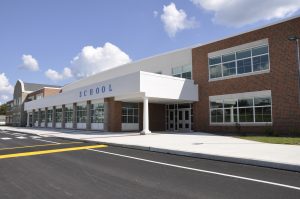Architecture Firm Receives §179D Deduction of $4,000 for Elementary School Renovation Project
 When an architecture firm was hired by a local government to complete the designs for an elementary school renovation, the firm’s goals for the project included improving sustainability, reducing the school’s operating expenses over the long term, and enhancing comfort within the building. In pursuit of these goals, the firm incorporated a variety of energy efficiency measures in the school’s lighting, HVAC systems, and the building envelope.
When an architecture firm was hired by a local government to complete the designs for an elementary school renovation, the firm’s goals for the project included improving sustainability, reducing the school’s operating expenses over the long term, and enhancing comfort within the building. In pursuit of these goals, the firm incorporated a variety of energy efficiency measures in the school’s lighting, HVAC systems, and the building envelope.
In planning for the elementary school project, the architecture firm also considered ways to offset costs and minimize their tax burden through applicable tax deductions. After consulting the experts at CRG, the firm learned that they qualified for a $4,000 deduction under §179D of the tax code, based on property assets of $45,000 within a certified 7,215 square-foot space.
The §179D deduction for primary designers
Created under the Energy Policy Act (EPAct) of 2005, §179D of the tax code offers a deduction of up to $1.80 per square foot (indexed for inflation) for qualifying energy efficiency measures installed in commercial or public buildings. Specifically, the deduction is worth up to $0.60 per square foot each for improvements to a building’s interior lighting systems, HVAC and hot water systems, and the building envelope. Under a COVID-relief spending package enacted in late 2020, the §179D deduction is now a permanent part of the tax code—which represents a welcome change after years of the deduction’s uncertain status as a “tax extender.”
The §179D deduction is available to commercial building owners, as well as the primary designers—such as the architects, engineers, contractors, or green building consultants—of qualifying energy efficiency measures for buildings owned by local, state, or federal governments. Since government entities do not pay taxes and therefore cannot utilize the deduction, they may transfer it to their primary designers via an allocation letter.
How to claim the §179D deduction
To qualify for the §179D deduction, all projects must be certified by a third party using Department of Energy-approved software. The certification must show that the measures installed in the building can reduce energy and power costs by at least 50% compared to a building that meets the minimum requirements set by the applicable ASHRAE 90.1 Standard. Before 2021, this was ASHRAE 90.1-2007. However, the new law that made the §179D deduction permanent also stipulated that projects must follow the most recent ASHRAE 90.1 Standard that was in effect as of two years before construction began. For new projects beginning in 2021, this would be ASHRAE 90.1-2019—which has significantly more stringent requirements for energy efficiency than 90.1-2007.
At CRG, we stay up to date on the latest changes in tax law, including the §179D deduction. Our team offers a unique combination of expertise in tax, engineering, and commercial property, enabling us to help our clients maximize their tax savings under the §179D deduction and other incentives. Contact us today to schedule a consultation!